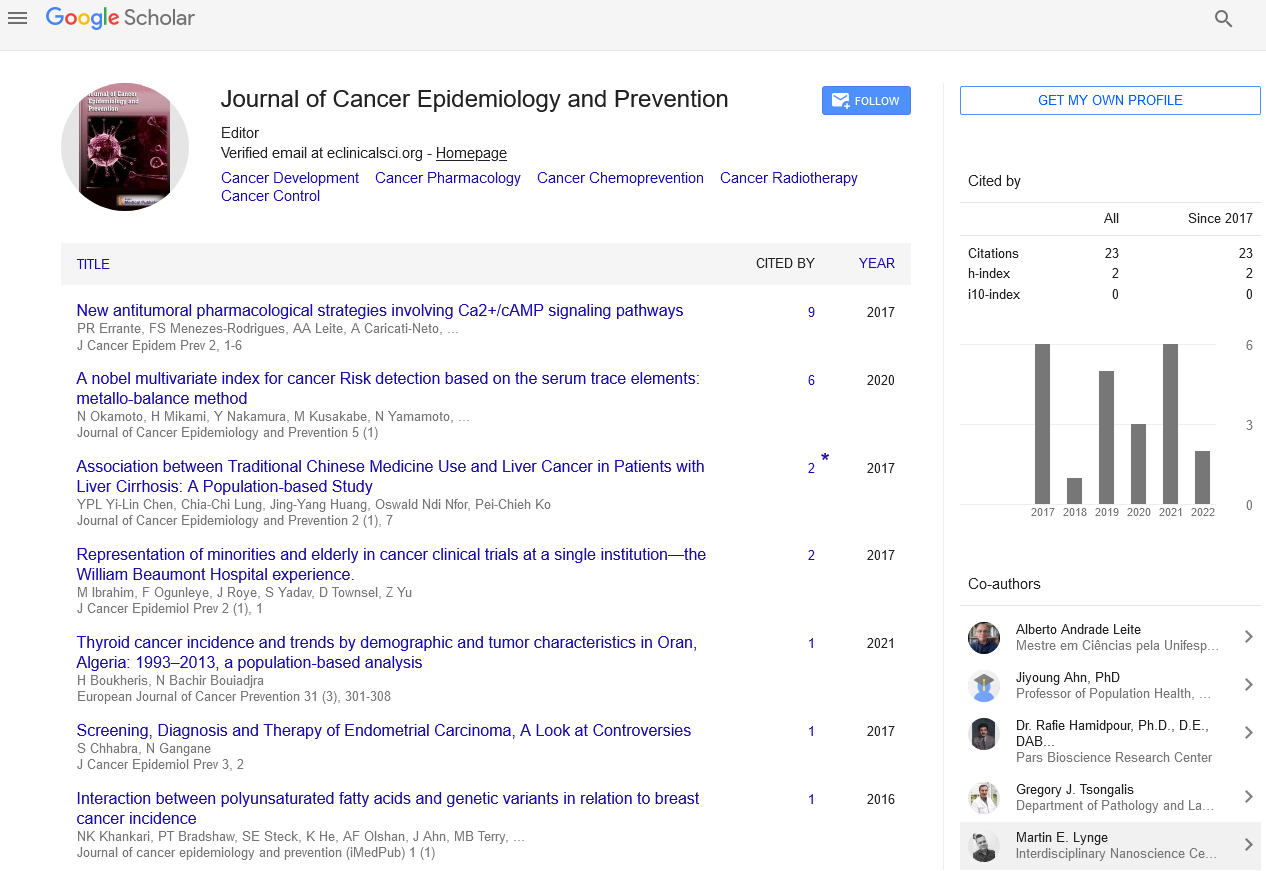Commentry - (2021) Volume 6, Issue 6
A Brief Note on Cancer Biomarkers and its Uses
Lang Kim*
Department of Cancer and Epidemiology, Shanghai Jiao Tong University, Shanghai, China
*Correspondence:
Dr.
Lang Kim, Department of Cancer and Epidemiology,
Shanghai Jiao Tong University, Shanghai,
China,
Email:
Received: 03-Dec-2021
Published:
24-Dec-2021
Description
A cancer biomarker is a component or mechanism that can be
used to detect the presence of cancer in the body. A biomarker
is a substance produced by a tumour or a specific body reaction
to the existence of cancer. For cancer diagnosis, prognosis, and
epidemiology, genetic, epigenetic, proteomic, glycolic, and
imaging biomarkers can be utilized. Such indicators should
ideally be tested in non-invasively collected bio fluids such as
blood or serum.
The term "biomarker" is defined differently by different
organisations and publications. Biomarkers are proteins that
may be identified or measured in the blood or urine in various
fields of medicine. But, the term is often used to any
quantifiable or easily measurable molecular, biochemical,
physiological, or anatomical characteristic.
While there are significant problems in transferring biomarker
research into clinical practise, a number of gene and proteinbased
biomarkers have already been used in patient care,
including AFP (liver cancer), BCR-ABL (chronic myeloid
leukaemia), BRCA1/BRCA2 (breast/ovarian cancer), BRAF V600E
(melanoma/colorectal cancer), CA-125 (ovarian cancer), CA19.9
(pancreatic cancer), CEA (Because they can only derive from an
existing tumour), mutant proteins discovered by Selective
Reaction Monitoring (SRM) have been reported to be the most
specific biomarkers for malignancies. Around 40% of
malignancies can be treated if caught early enough with tests.
A biological molecule detected in blood, other bodily fluids,or tissues is a sign of normal or abnormal activity condition or disease.
A biomarker can be used to measure how much the body's reaction to treatment for an illness or condition.Also known as a molecular marker or a signature molecule.
Biomarkers are utilised in cancer research and medicine in
three ways.
1. To aid in the diagnosis of diseases, such as malignancies in
their early stages (diagnostic).
2. To predict the severity of an illness, such as evaluating a
patient's prognosis in the absence of treatment (prognostic).
3. To forecast a patient's response to treatment (predictive).
Biomarker uses in cancer research
Biomarkers are frequently employed throughout the cancer
medication discovery process, in addition to their usage in
cancer therapy. For example, researchers discovered in the
1960s that the majority of individuals with chronic myelogenous
leukaemia had a genetic mutation on chromosomes 9 and 22
known as the Philadelphia chromosome. When these two
chromosomes come together, they form BCR-ABL, a cancercausing
gene. In such patients, this gene serves as the primary
starting point for all of the leukaemia’s physiological symptoms.
For many years, the BCR-ABL was merely utilised as a biomarker
to classify a certain leukaemia subtype. Imatinib, a potent
medicine that efficiently blocked this protein and dramatically
reduced the generation of cells with the Philadelphia
chromosome, was later developed by pharma developers.
Surrogate endpoints are another intriguing application of
biomarkers. In this application, biomarkers are used to mimic
the impact of a drug on cancer progression and survival. In a
perfect world, the use of validated biomarkers would eliminate
the need for tumour biopsies and lengthy clinical trials to
determine whether a new treatment was beneficial. The current
gold standard for determining a drug's efficacy is to examine if it
reduces cancer progression in humans and, eventually, extends
survival. If ineffective drugs could be weeded out of the
development pipeline before entering clinical trials, biomarker
surrogates might save a lot of time.
Citation: Kim L (2021) A Brief Note on Cancer Biomarkers and its Uses. J Cancer Epidemiol Prev. Vol.6 No.6:007.
Copyright: This is an open access article distributed under the terms of the Creative Commons Attribution License, which permits unrestricted use, distribution, and reproduction in any medium, provided the original work is properly cited.

